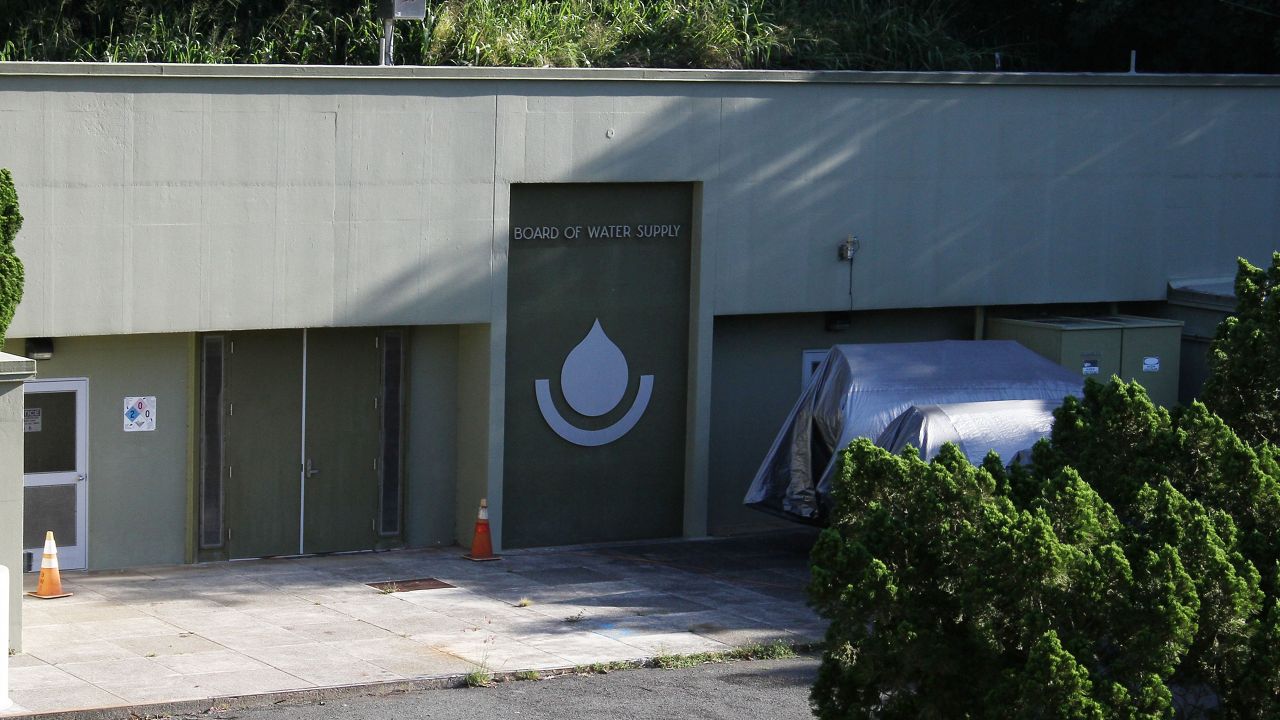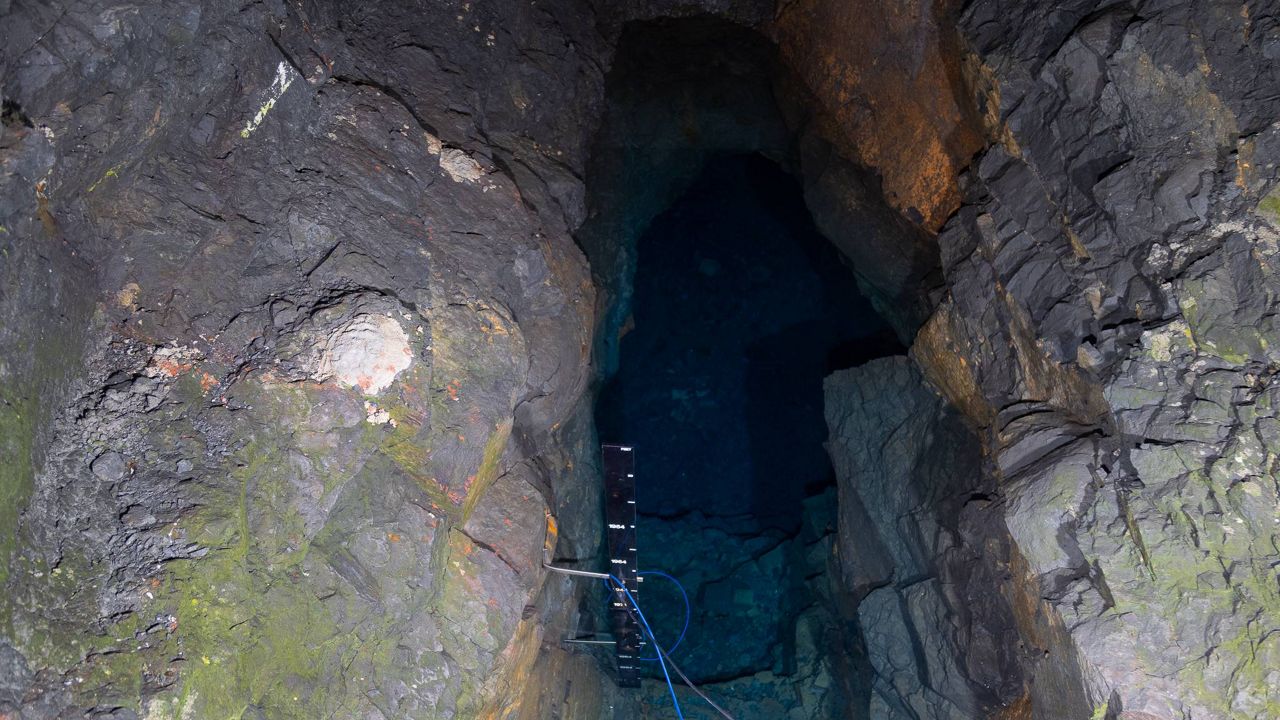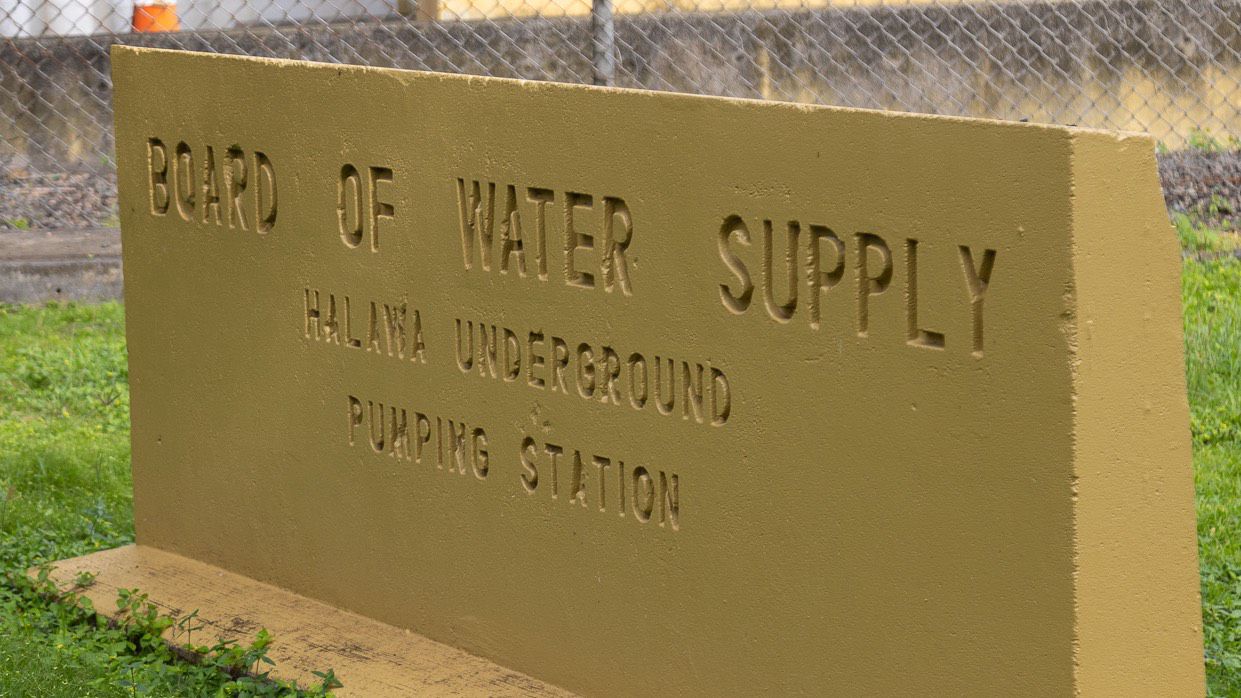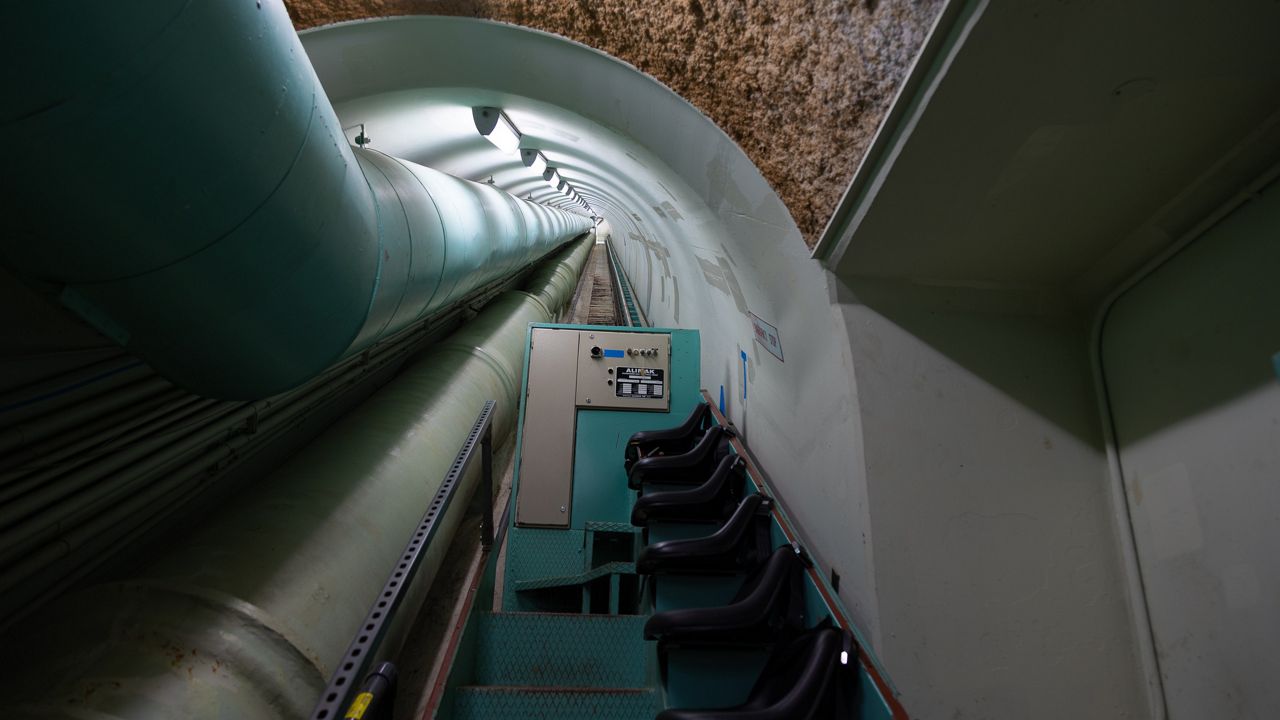HONOLULU — Since 2013, the Honolulu Board of Water Supply has been testing Oahu’s drinking water for perfluoroalkyl and polyfluoroalkyl substances, commonly called PFAS.
This year, the BWS detected low levels of PFAS in its Waipahu Wells, Makakilo Well, Waipio Heights Wells, Moanalua Wells, Halawa Wells, and Kaamilo Wells.
In order to better understand these detections, Spectrum News Hawaii looked into how the BWS’s testing program works.
What are PFAS
PFAS refer to thousands of related human-made compounds, with the common factor being that they are all fluorine atoms on a carbon backbone, according to Catherine Pirkle, a University of Hawaii at Manoa Office of Public Health Studies associate professor.
Since the 1940s, manufacturers have used PFAS in non-stick cookware, stain-repellent carpets and furniture, water-repellent clothing, dental flosses, firefighting foam and food packaging, including pizza boxes, microwavable popcorn bags, fast food wrappers and more.
PFAS are known as “forever chemicals” because the carbon-fluorine bonds are very stable, remaining in the environment for a long time. Everywhere they are used, PFAS have found their way into the soil, sediment, drinking water, ocean and animals. They bioaccumulate in the food chain, ending up in top predators and humans. They also evaporate and disseminate through the atmosphere, spreading far from their original source and to remote places like the Arctic.
About 20 years ago, the global dispersion of PFAS became widely known, and the National Health and Nutrition Examination Survey showed that almost all Americans had PFAS in their bodies. People ingest them through food, drinking water, dust indigestion, hand-to-mouth transfer from treated carpets, and consumer products. Young children and babies often have much higher concentrations of PFAS than adults.
“The study of the health effects of PFAS (is) relatively new. It was not until 2000 that widespread dispersion into the environment and presence in the human body of PFAS was publicly known. Yet, despite the relatively late start in the study of human health effects, there is now substantial evidence that these chemicals harm health,” Pirkle said.
PFAS have been linked to kidney cancer, testicular cancer, prostate cancer, ovarian cancer and non-Hodgkin lymphoma, according to Pirkle. The chemicals may affect fertility in adults and exposure while in utero is associated with low birth weight and preterm birth. There is also evidence for a range of other ways PFAS harm health from liver toxicity to thyroid disease.

Where PFAS have been detected on Oahu
The Board of Water Supply of Honolulu provides water to most of Oahu, serving about a million people a day, including residents and visitors, and pumping 145 million gallons of water a day. In total, BWS manages over 194 wells and groundwater sources.
In 2023, the BWS detected low levels of PFAS in its Waipahu Wells, Makakilo Well, Waipio Heights Wells, Moanalua Wells, Halawa Wells, and Kaamilo Wells.
However, Oahu has some water systems that are not operated by the BWS. Kunia Village, where the Hawaii Department of Health said PFAS were detected this year, uses water from an Army well. Kipapa Acres near Waipio, where the DOH said PFAS were detected in 2022, serves about 50 people and is looking to transition to the BWS by 2024.
Also, the island’s military bases all manage their own water systems, except for the Kaneohe Marine Corps Base, which is a client of the BWS. In 2020, the Navy’s Joint Base Pearl Harbor-Hickam reported PFAS in its Aiea Halawa Shaft.
How often the BWS tests for PFAS
The BWS tests each of its wells at least once a year, but when PFAS are found in a well, like at Makakilo Well and Waipio Heights Wells, the agency will then test those wells at least once every three months. Kathleen Elliott-Pahinui, the BWS spokesperson, said the agency tracks whether the PFAS increase, decrease or disappear.
The BWS also increases testing in areas that are near known PFAS pollution, according to Elliott-Pahinui. BWS conducts weekly tests on the wells surrounding the Navy’s Red Hill Bulk Fuel Storage Facility, because it was the site of petroleum and firefighting foam spills.
The BWS’s Halawa and Aiea Wells were closed in 2021, following the Red Hill fuel spill. So far, the BWS has not detected petroleum in these wells, but in 2020 and 2023, low levels of PFAS were detected in the Halawa Wells. The BWS is now testing these wells weekly, according to Elliott-Pahinui. She said results take six to eight weeks to process.
“It is too early to tell if there is a trend for the Halawa wells,” said Elliott-Pahinui.
Elliott-Pahinui said another area of concern is near the Hawaii Army National Guard Training Facility in Pearl City, where it was revealed in February that the military had detected PFAS. In March, the BWS said low levels of PFAS were detected in its Waipio Wells, which are nearby.

Improvements to PFAS testing
The BWS testing process — known as the Unregulated Drinking Water Contaminants — was created with the Environmental Protection Agency. In 2013, the BWS started testing Oahu’s water for six types of PFAS at levels as low as 0.01 micrograms per liter, using UCMR 3.
Ron Fenstemacher, the Honolulu BWS’s Acting Program Administrator for Water Quality, said since 2013, the ability to detect “forever chemicals” has vastly improved.
“You can measure things in smaller and smaller and smaller amounts,” said Fenstemacher.
Now, the test (known as UCMR 5) can detect 29 types of PFAS at levels as low as 0.002 micrograms per liter.
PFAS were first detected in Oahu’s water in 2020 at the Halawa Wells Pumping Station.
With the improvements to PFAS testing, people have grown increasingly aware and concerned about the chemicals, said Fenstemacher.
The EPA proposes regulating PFAS
The most commonly used and well-studied types of PFAS are PFOA and PFOS. These are long-chain PFAS, which remain in the human body for years. More recently, a newer generation of PFAS, with shorter chain compounds, was created to replace the legacy PFAS. The newer PFAS can move through the body more quickly. However, they are still environmentally persistent and new research shows they are also harmful to humans, according to Pirkle, the UH professor.
In March, the Environmental Protection Agency proposed limiting the amount of six PFAS in drinking water. The EPA’s proposed “Maximum Contaminant Levels” for both PFOS and PFAS is 4 nanograms per liter, which is the lowest level that tests can reliably measure them. The EPA is proposing to regulate four newer PFAS — GenX, PFNA, PFHxS and PFBS — as a mixture.
The EPA also released a non-enforceable lifetime health advisory, representing a concern if people were exposed throughout their lives to these chemicals in drinking water. The advisory set PFOS at 0.02 nanograms per liter and PFOA at 0.004 nanograms per liter. Currently, it’s not possible to test for PFAS at levels this low.
So far, the PFAS detected at BWS wells all fell below the EPA’s proposed Maximum Contaminant Levels. However, they are above the lifetime health advisory levels.

What to do about PFAS in the water
“The public can make an informed decision about what they would like to do (about PFAS in drinking water). Some people want to put in (home) filtration systems,” said Elliott-Pahinui.
As of now, the BWS has not found high levels of PFAS in the drinking water, so no action has been taken by the agency. However, if high levels of PFAS were found in Oahu’s drinking water, the EPA has suggested three methods for removing them: granulated active carbon, ion exchange and reverse osmosis.
The BWS currently uses the granulated active carbon method in Central Oahu and on the North Shore to remove legacy agrichemicals from the water and reverse osmosis at the Honouliuli Water Recycling Facility to make wastewater usable in golf courses, landscaping and ornamental ponds. While these methods have been employed by the BWS, they may have different outcomes if utilized to remove PFAS from the water.
“Each of the methods has its pros and cons,” said Elliott-Pahinui.
Currently, the BWS’s water resource team is putting together a Request For Proposal to hire a consultant who would study these various remediation methods. Elliott-Pahinui said it wouldn’t be a “one-size fits all” situation, but it is more likely that in certain instances, one method may be preferable to another.
“We've just literally started our own journey on how we're going to deal with this down the road,” said Elliott-Pahinui.
“It’s a developing story”
Fenstemacher, the BWS’s Acting Program Administrator for Water Quality, compared PFAS to Dichlorodiphenyltrichloroethane, commonly known as DDT, a synthetic insecticide created in the 1940s. Similarly to PFAS, DDT is very persistent in the environment and can travel long distances through the atmosphere. Rachel Carson’s book “Silent Spring” in 1962 brought widespread awareness to the environmental and health effects of DDT. Ten years later, the EPA banned DDT for agricultural use.
“This story (of PFAS) seems to rhyme with the story of how DDT turned out too. They just used lots and lots and lots of this chemical that doesn't decay, and it eventually winds up spreading all over and causing problems,” said Fenstemacher.
Compared to DDT, PFAS are being caught “pretty fast,” Fenstemacher said. However, he noted PFAS are even slower to break down.
“It’s a developing story,” said Fenstemacher. “People are still trying to figure out what's going on, and how this is all going to play out. I don't think there's any real, final answers yet.”
For those interested in learning more, the BWS recommended reading its informational website on PFAS and page on protecting Oahu’s waters.
Michelle Broder Van Dyke covers the Hawaiian Islands for Spectrum News Hawaii. Email her at michelle.brodervandyke@charter.com.





